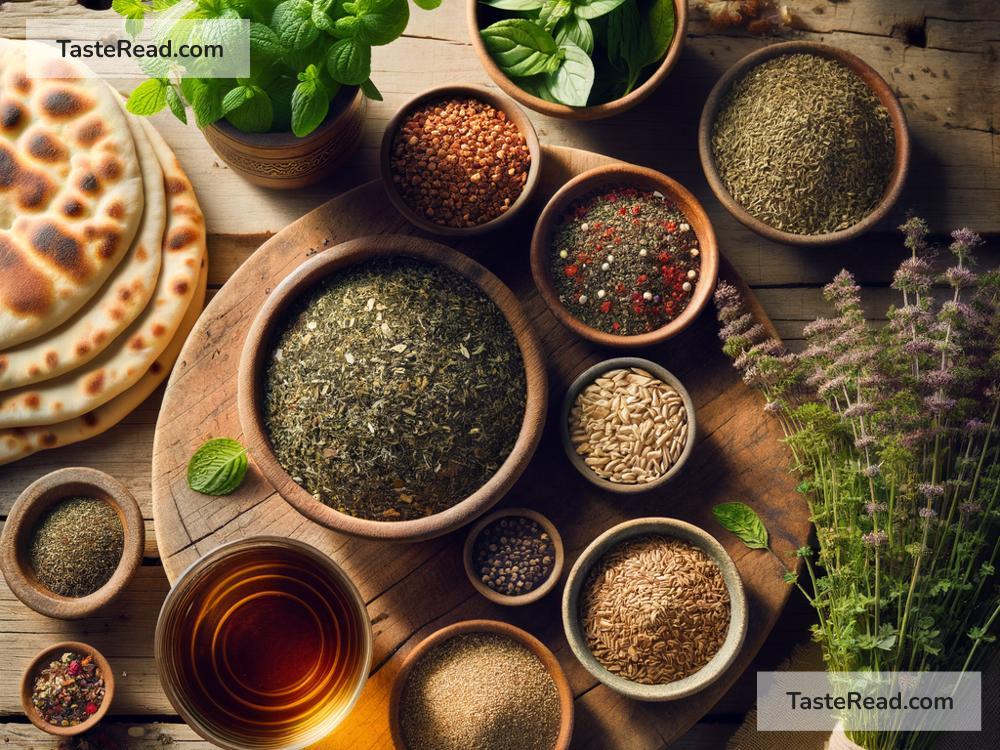Exploring Herbal Infusions in Middle Eastern Zaatar Blends in Jordan
Jordan, a beautiful country in the heart of the Middle East, is known for its rich history, stunning landscapes, and delicious food. One of the country’s most loved and unique culinary traditions is its use of Zaatar. This aromatic blend of herbs and spices is not just a food ingredient—it’s a cultural treasure and a symbol of togetherness. In this blog, we’ll explore what makes Zaatar so special, the herbal infusions that bring the blend to life, and how it’s enjoyed in Jordan.
What is Zaatar?
Zaatar is a traditional Middle Eastern mix of herbs and spices that has been passed down through generations. The base ingredients of Zaatar typically include thyme, oregano, sumac, sesame seeds, and salt. Each family, town, or region might tweak the recipe slightly, adding their own touch to the blend.
In Jordan, Zaatar is more than just a seasoning—it’s a part of daily life. People mix it with olive oil to create a flavorful paste, sprinkle it on bread, or use it to enhance meats, vegetables, and dips. It’s simple yet packed with layers of flavor that tell a story about the landscape, culture, and heritage of the region.
The Power of Herbal Infusions
What makes Zaatar exceptional is the herbal infusions in the blend. The herbs aren’t just flavorful; they’re believed to have health benefits. Jordanians have a deep respect for nature and traditional remedies, and Zaatar embodies this wisdom. Let’s explore the key herbal components of Zaatar:
-
Thyme
Thyme is the hero of Zaatar. It gives the mix its earthy, fragrant flavor. Thyme isn’t just delicious—it’s also known for its medicinal properties. Many people in Jordan believe thyme helps with digestion and strengthens the immune system. It’s often grown locally, making it a fresh and sustainable addition to the blend. -
Oregano
Oregano adds a slightly bitter, robust note to Zaatar. Like thyme, oregano is packed with antioxidants and is used in traditional medicine to support respiratory health. Its presence in Zaatar makes the blend refreshing and vibrant. -
Sumac
Sumac is another key ingredient, bringing tangy and citrusy tones to the mix. It’s made from dried and ground berries and gives Zaatar its bright red color. Sumac is loved not only for its flavor but also for its anti-inflammatory properties. It balances the richness of the herbs with its sharp acidity. -
Sesame Seeds
Sesame seeds offer a nutty crunch to the blend. These seeds are high in healthy fats, vitamins, and minerals. In Zaatar, sesame seeds create a delightful texture and contrast to the soft herbs. -
Salt
Salt ties everything together, ensuring the flavors of the herbs and seeds shine. It enhances the taste and preserves the blend.
Zaatar and Jordan’s Olive Oil Tradition
In Jordan, Zaatar is inseparable from olive oil, which is another cornerstone of Jordanian cuisine. Olive oil in Jordan is rich and golden, often produced from groves that have been cultivated for centuries. To make the classic Zaatar dip, Jordanians mix the blend with olive oil to create a thick, aromatic paste. This paste is typically spread on taboon bread (a type of flatbread) or served alongside grilled meats and vegetables. The combination of Zaatar and Jordanian olive oil is a celebration of local flavors at their finest.
Cultural Importance of Zaatar in Jordan
Zaatar isn’t just food; it’s part of Jordanian culture and hospitality. When you visit a Jordanian household, it’s common to be offered Zaatar and olive oil with warm bread or tea. Sharing Zaatar around the table represents connection and warmth—values that are central to Jordanian life.
During breakfast, Zaatar is often enjoyed with boiled eggs, fresh cucumbers, tomatoes, labneh (a creamy yogurt cheese), and tea. It’s a simple yet nourishing meal that many Jordanians hold close to their hearts.
Even during celebrations and gatherings, Zaatar plays a role. Families often prepare large batches of Zaatar blends, which their relatives and friends will take home as gifts. This highlights Zaatar’s significance as a symbol of love and generosity.
How You Can Try Zaatar in Jordan
If you ever find yourself in Jordan, trying Zaatar is a must! You could visit a local spice shop or market to see the colorful jars of Zaatar blends. Jordanians love sharing stories about their family recipes and traditions, so don’t be shy to ask questions when you visit. You’ll also find Zaatar on menus in Jordanian restaurants or bakeries, where it’s often baked into bread or served with dipping oils.
Final Thoughts
Jordan’s Zaatar blend is more than just a seasoning—it’s a celebration of flavorful herbs, local traditions, and community. Each pinch of Zaatar carries the essence of Jordan’s nature and culture. The next time you try a dish with Zaatar, remember you’re tasting a blend that connects people to the land and to each other. Whether you enjoy it on bread or paired with olive oil, Zaatar is sure to make every bite unforgettable.
So, if you ever get the chance to visit Jordan, make sure to explore its spicy, fragrant world of Zaatar. It’s not just food—it’s a journey through Jordan’s heart.


